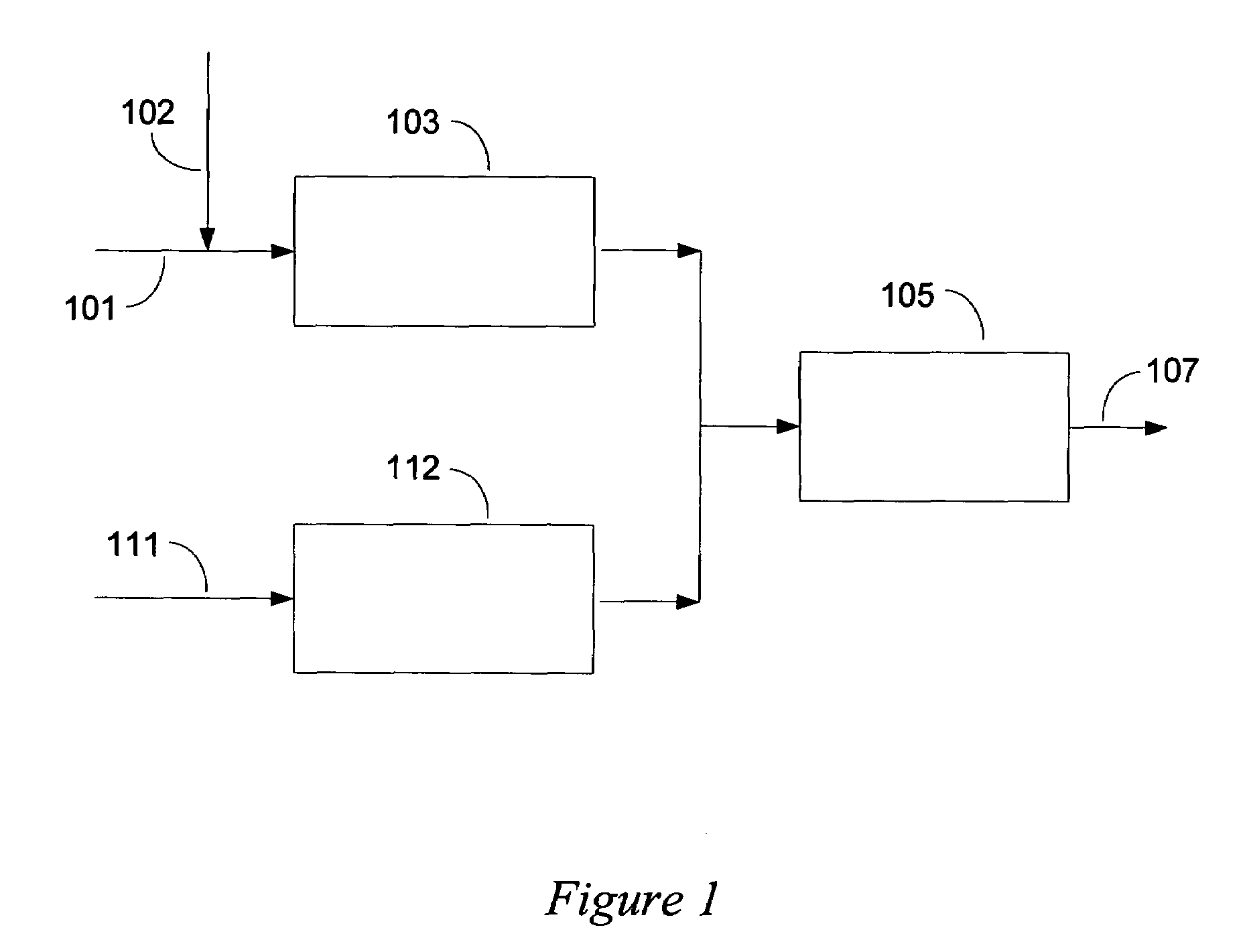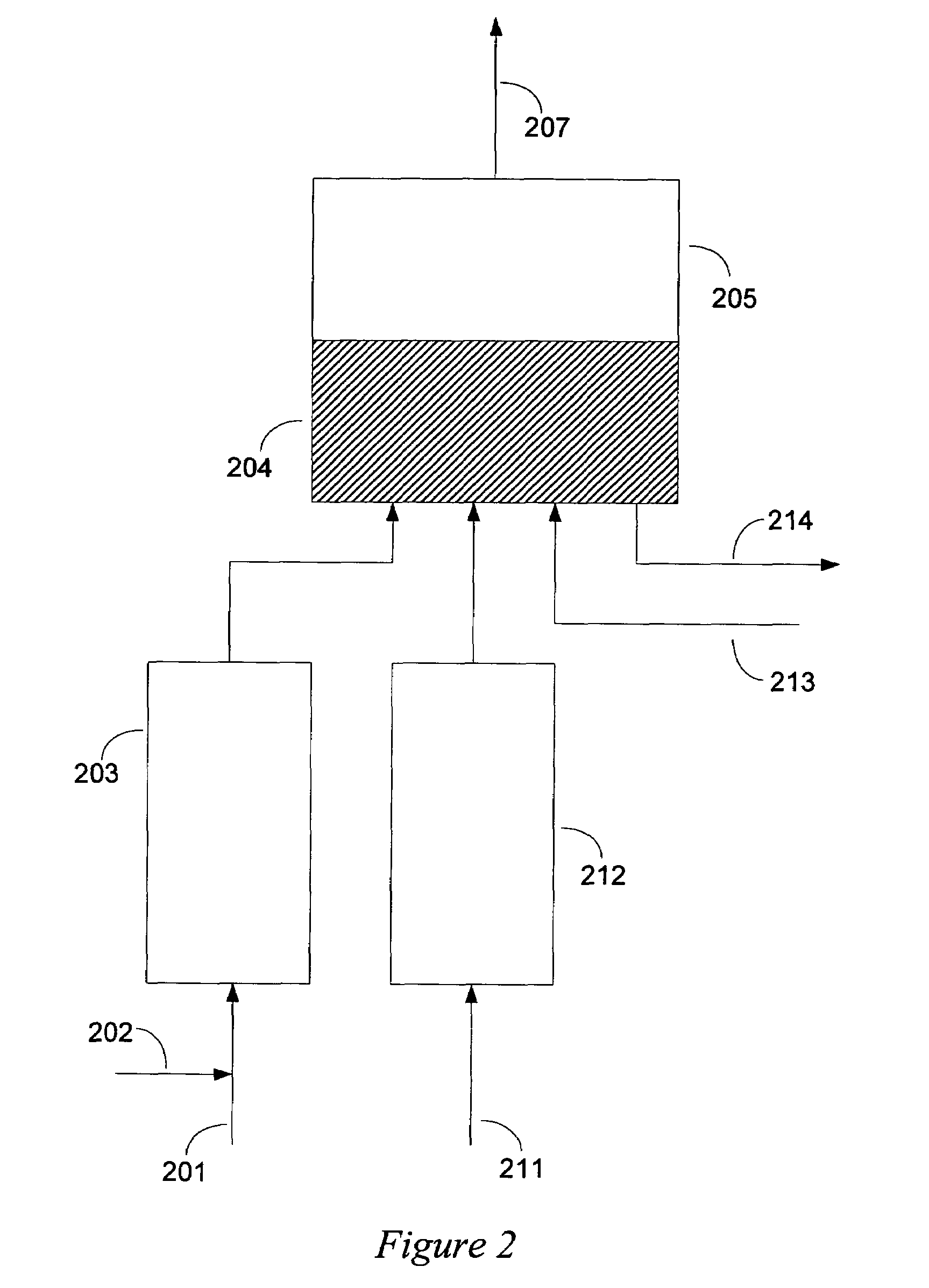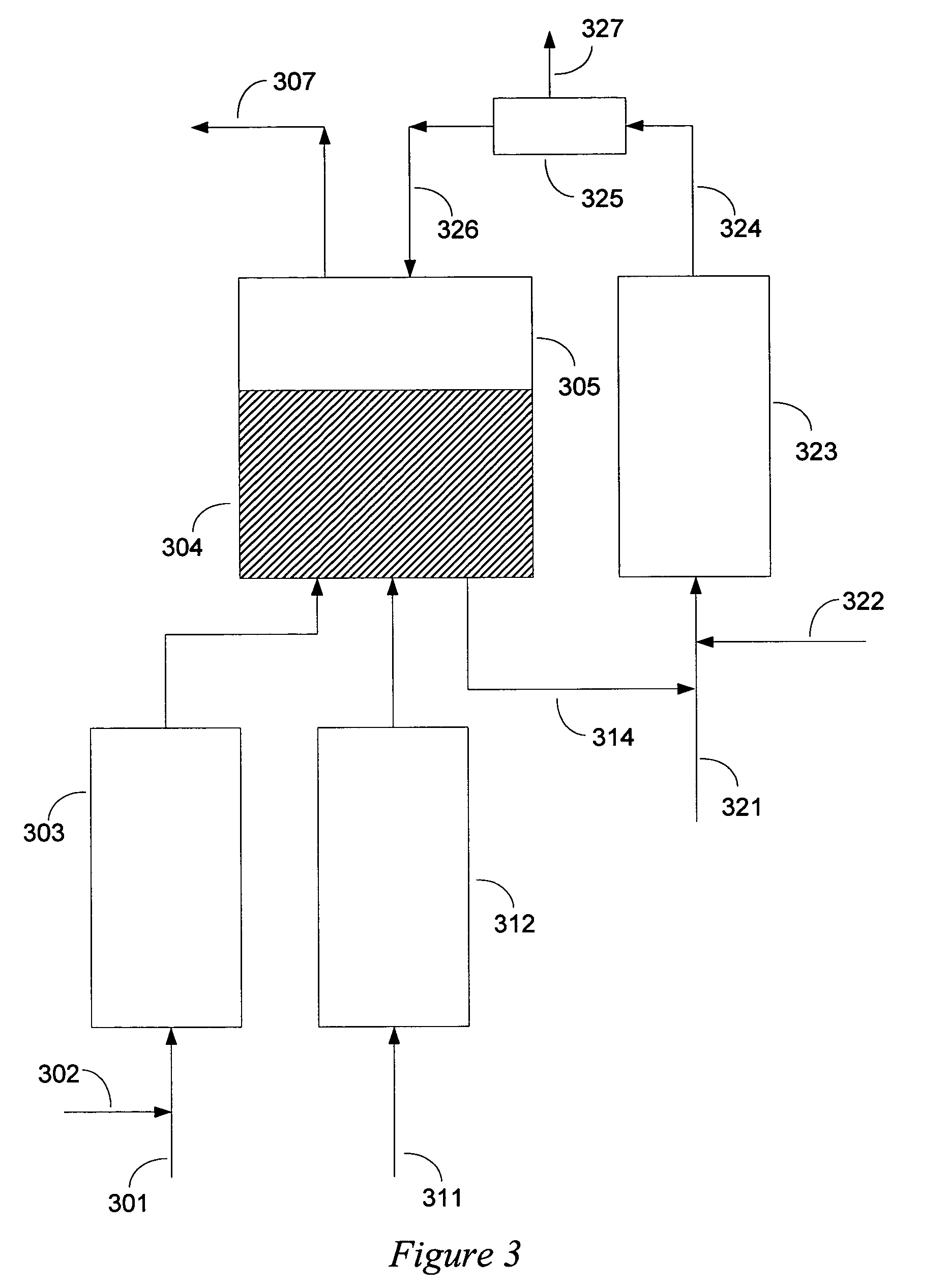Method for making single-wall carbon nanotubes using supported catalysts
a catalyst and catalyst technology, applied in the direction of carbonsing rags, fibre chemical treatment, chemistry apparatus and processes, etc., can solve the problems of poor economics and relatively low product yield of most cvd methods for producing single-wall carbon nanotubes
- Summary
- Abstract
- Description
- Claims
- Application Information
AI Technical Summary
Benefits of technology
Problems solved by technology
Method used
Image
Examples
example 1
[0095]CoMo / MgO catalyst was prepared by a wet mechanical mixing and combustion synthesis using the formulation of Tang et al. (Chemical Physics Letters, 350 (2001) pp. 19-26). 10 g magnesium nitrate hexahydrate Mg(NO3)2.6H2O (Mol. Wt. 256.41), 0.6 g cobalt nitrate hexahydrate Co(NO3)2.6H2O (Mol. Wt. 291.04), 0.073 g ammonium heptamolybdate tetrahydrate (also known as ammonium paramolybdate or “Molybdic acid”) (NH4)6Mo7O24.4H2O (Mol. Wt. 1235.86), and 4 g anhydrous citric acid HOC(CH2CO2H)2CO2H (Mol. Wt. 192.12) were mixed with 5 ml water by mortar and pestle. The resulting mixture was transferred to a 500-ml beaker and placed in a high temperature furnace preheated at 550° C. Instantaneously, the solution foamed and a large quantity of pink-colored fluffy flakes filled up the beaker. The flakes of catalyst were kept in the furnace for 60 minutes until no trace of black carbon ash was observed. The catalyst was then removed from the high temperature furnace and cooled in a desiccator...
example 2
[0098]This example demonstrates the preparation of single-wall carbon nanotubes using a catalyst with a lower metal loading using the preparation procedures of Example 1.
[0099]0.25 g cobalt nitrate hexahydrate, 0.0365 g ammonium heptamolybdate tetrahydrate, 10 g magnesium nitrate hexahydrate, and 4 g anhydrous citric acid were dissolved with 10 ml deionized water in a 500-ml beaker. When the solution was clear, the beaker was placed in a high temperature furnace preheated to 650° C. A sudden drop in furnace temperature was observed. Almost immediately, the solution foamed and a large quantity of pink fluffy flakes filled the beaker. The furnace temperature was lowered to 550° C. and held for 60 minutes. The catalyst was retrieved from the furnace and placed in a desiccator. The catalyst flakes were readily ground by mortar and pestle to a fine flowing powder. The ground catalyst powder had particle size of less than about 5 μm and a bulk density of about 0.1 g / cm3. The chemical comp...
example 3
[0103]The catalyst prepared in Example 2 was used in a series of single-wall carbon nanotube growth experiments at different temperatures, including 775, 800, 825, 850, 875, 925, and 950° C. The nanotube growth procedure was identical to Example 2, except for the growth temperature. Single-wall carbon nanotubes were made at each temperature and analyzed by TEM. The carbon yields determined by TGA, and the G / D peak intensity ratios determined from Raman spectroscopy, are plotted in FIG. 9. Higher growth temperatures gave higher carbon yields with less extraneous carbon. In general, the highest single-wall carbon nanotube yields were obtained with hydrocarbon feedstock at reaction temperatures above about 800° C.
PUM
| Property | Measurement | Unit |
|---|---|---|
| weight ratio | aaaaa | aaaaa |
| molar ratio | aaaaa | aaaaa |
| temperatures | aaaaa | aaaaa |
Abstract
Description
Claims
Application Information
 Login to View More
Login to View More - R&D
- Intellectual Property
- Life Sciences
- Materials
- Tech Scout
- Unparalleled Data Quality
- Higher Quality Content
- 60% Fewer Hallucinations
Browse by: Latest US Patents, China's latest patents, Technical Efficacy Thesaurus, Application Domain, Technology Topic, Popular Technical Reports.
© 2025 PatSnap. All rights reserved.Legal|Privacy policy|Modern Slavery Act Transparency Statement|Sitemap|About US| Contact US: help@patsnap.com



